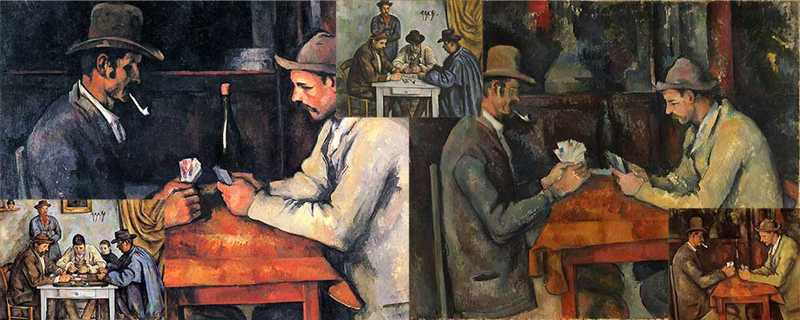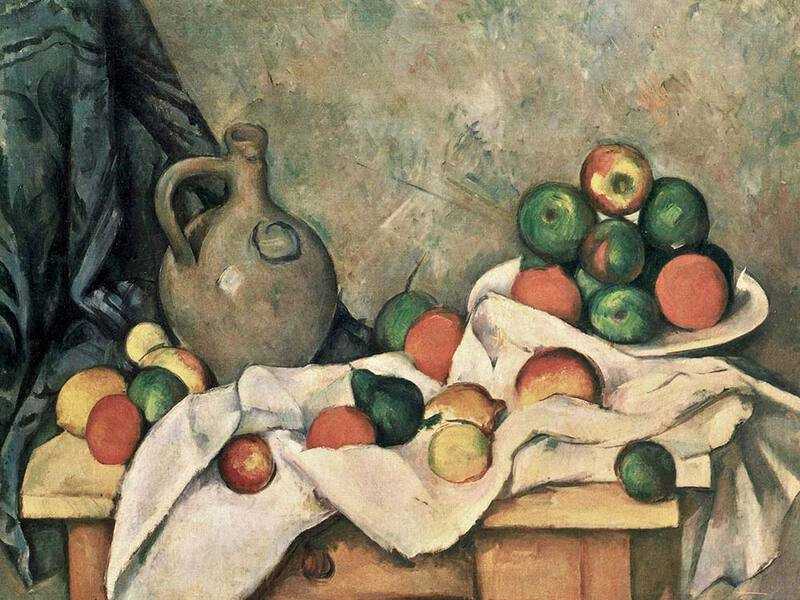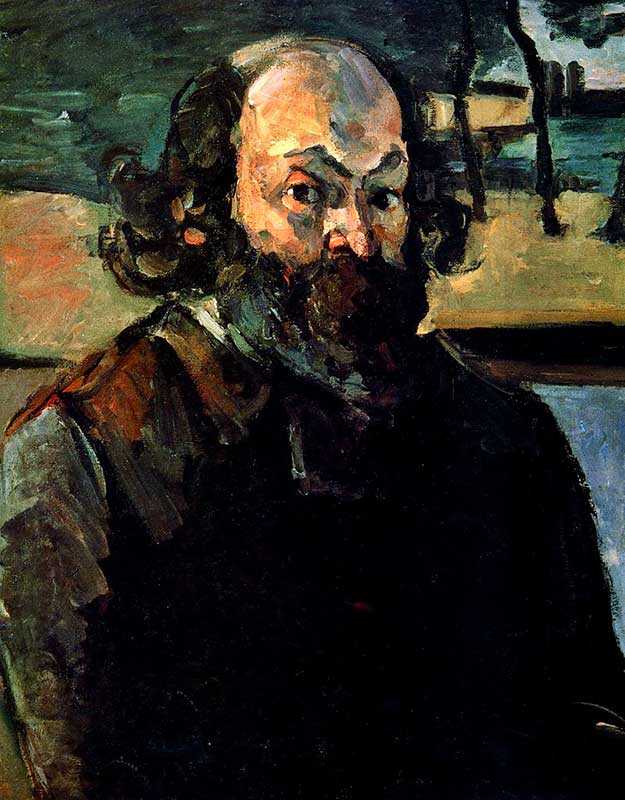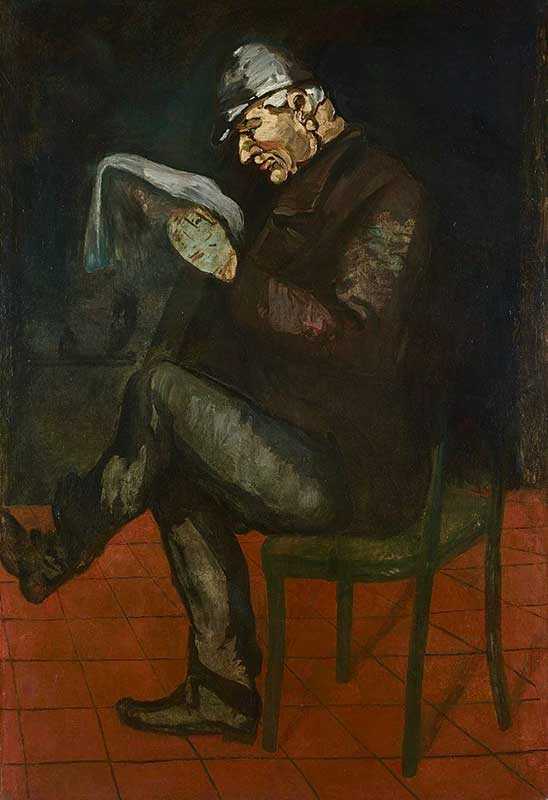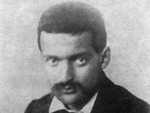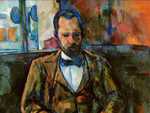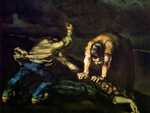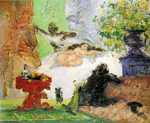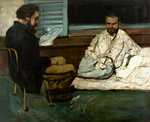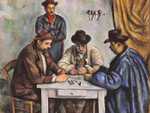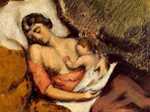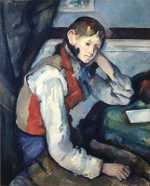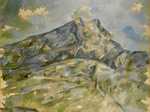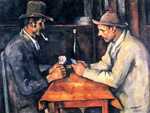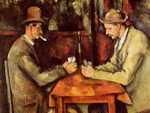1. Cezanne’s Early Years
Cezanne’s early life is marked by the shadow of his father’s approval looming over his decisions. Cezanne displayed an inclination for art from an early age and wanted to move to Paris to study art.
This was not looked upon favorably by his dad who expected his son to follow in his footsteps.
1839: Paul Cezanne is born in Aix-en-Provence in Southern France on the 19th of January. His father runs a hat-making company called Cezanne and Coupin.
1844: Cezanne’s parents marry soon after his fifth birthday.
1852: Cezanne enters local college Bourbon and strikes up a friendship with Baptistin Baille and Emile Zola, and their circle is called “the Inseparables”. Baille would become a scientist in his later years, while Zola was to become an art critic, a writer, and a friend to the impressionist artists.
1854: Cezanne’s father establishes the Cezanne and Cabassol Bank.
1858: Emile Zola leaves for Paris. Cezanne wishes to follow Zola, but his father does not permit it, instead wishing for him to study law and become his successor in his bank. With his father’s financial support, Cezanne joins the law school of the University of Aix-en-Provence.
2. Cezanne’s Dark Period
The years between 1861-70 represent Cezanne’s "dark period" characterized by a dark palette and violent or erotic themes.
During this era, he often painted using a palette knife instead of a brush. His early works were created with heavy pigments in dark tones which made for an overall romantic and moody expressionist style.
1861: Cezanne quits law school after two years and, with his mother’s backing, convinces his father to let him move to Paris. He tries to gain admittance to the Ecole des Beaux-Arts but his application is rejected twice which leaves him feeling heartbroken. Cezanne returns to Aix to work in his father’s bank.
Interesting fact:
Cezanne talks about his struggle with depression in a letter to Zola. He says, “I thought when I left Aix, I would leave behind the depression that I can’t shake off, but all I’ve really done is change places. I’m still depressed. I’ve just left my parents, my friends, and some of my routines, that’s all.”
1862: Cezanne does not enjoy working in the bank and returns to Paris. He joins Suisse’s studio where he meets Claude Monet, Camille Pissarro, and Auguste Renoir. Meanwhile, he makes frequent visits to the Musée du Louvre, where he becomes a copyist, which meant an art student who was authorised to copy the masterpieces at the Louvre, such as works by Rubens, Titian, and Michelangelo.
1863: Cezanne submits an art piece to the Salon which is rejected. He exhibits at the Salon des Refusés along with Manet and Pissarro. (The Salon des Refusés was a one-time exhibition hosted in 1863, on the orders of Emperor Napoleon III, to display works that had been rejected by the Salon’s jury.)
1865: Still Life with Bread and Eggs, Cezanne’s first significant attempt at still life, was rejected by the Salon.
1867: Cezanne paints The Abduction (depicting a scene from classical mythology) and Sorrow (which shows a man hunched over in grief), paintings that are characteristic of his dark period.
1869: Cezanne meets his mistress and future wife Marie-Hortense Fiquet when she is working as a model in Suisse’s studio.
1870: Cezanne’s portrait of his dwarf friend, Achille Emperaire, does not fare well and gets rejected by the Salon’s jury. He paints The Murder, a dramatic painting with a shocking subject.
1870-71: The Prussian war takes place and France is defeated. This period of his life marks a change in his artistic career due to two leading factors: his move to the fishing village in Southern France close to Aix called L’Estaque to avoid the military draft, and meeting the yet-unrecognised impressionist painter, Camille Pissarro.
Cezanne is fascinated by the bright hues of nature in L’Estaque, which appealed to his nostalgic nature that missed his hometown Aix. The Mediterranean landscape with bright sunlight, the brilliant hues of the ocean, the foliage, and the rural architecture combined with Pissarro’s persuasion to lighten his palette are instrumental to the shift in his art. Pissarro also advises him to forego the heavy impasto technique in favor of smaller and vibrant brushstrokes. The result of his time spent in L’Estaque is a collection of vibrant paintings such as Melting Snow, Bouquet in a Delft Vase, L’Estaque, and the House of Doctor Gachet in Auvers.
1872: Cezanne has a son, Paul jr, with his mistress Marie-Hortense. Cezanne conceals the relationship with Hortense and the birth of his son Paul from his strict father for nine years. Cezanne’s father does not want to sever ties with his son, and even when he does learn of Paul jr. through a letter that mistakenly references the child, he later relents and helps Cezanne whenever he needs it.
3. The Impressionist Exhibitions
The 1870s is a time when Cezanne’s style metamorphosed from shocking and dramatic to a bright and merry impressionist style.
1874: The impressionists, who are sick and tired of facing rejection after rejection from the Salon, hold their first private exhibition. Cezanne is nearly excluded, partially due to the unsettling nature of his submissions. He gains admittance due to his friend Pissarro’s insistence. Even Edouard Manet is against it. The issue is resolved when Degas proposes other famous painters, such as Boudin, become a part of the exhibition. By inviting other people, the impressionists feel that they can not leave out one of their own. However, the exhibitions do nothing to help Cezanne. The reviews are acrid and harsh, and Cezanne is deeply affected.
1875: The impressionists hold an auction of their art at the Hotel Drouot and this becomes their doorway to meeting several art collectors. Victor Chocquet is one of them, a tax collector with a small private income and is reportedly very fond of Auguste Renoir.
1877: Renoir introduces Chocquet to Cezanne and the two of them get on well. Chocquet becomes a strong Cezanne supporer, both emotionally and financially. In the third Impressionist Exhibition of 1977 Chocquet stands beside the 16 works Cezanne is exhibiting and explains them to the incoming visitors. However, the third exhibition does not fare any better than the first, with the critics tearing apart the impressionists' work. At this point, Cezanne has had enough and he distances from the Impressionists, turning down further group exhibitions and moving to Provence.
4. 1880s - Cezanne matures as an Artist
After his move to Provence, Cezanne’s style appears to mature and he paints landscape scenes from Provence as well as multiple paintings of Mont Sainte-Victoire, a 1,011 metre Provençal mountain.
He produces 43 watercolours and 44 oil paintings of his favorite mountain. This is also an era of isolation for him as he cuts off from most of his family and friends.
1882: Cezanne gets accepted by the Salon for the first time in 18 years. The painting he submitted is called “Portrait of M.L.A.”. The acronym stands for Monsieur Louis-Auguste, Cezanne's father. This painting is similar to a piece that Cezanne produced in 1866, entitled The Artist’s Father, which depicts a man reading L’Enevement.
1884: Ambroise Vollard, an art dealer and a supporter of the impressionists, buys two Cezanne paintings, after establishing his own gallery at Rue Laffitte in Paris the previous year.
1885: Vollard buys a huge portion of Cezanne’s work painted in the previous decades of his life and puts on a one-man exhibition. It is a considerable commercial success, and Cezanne’s name and reputation start to grow.
1886: Emile Zola publishes a novel in the Rougon-Macquart series he had been writing, entitled L’Oeuvre (The Masterpiece). The central character, Claude Lantier, is a brilliant artist who is doomed to failure. The story contains parallels from Cezanne’s life which he doesn’t take to be a coincidence and gets very offended, and completely shuts out Zola from his life.
Cezanne's father dies in 1886 and Cezanne inherits the considerable wealth and the family estate, Le Jas de Bouffan. This financial freedom allows him to work without worry and struggle. Shortly thereafter he also marries Marie-Hortense, his partner of 17 years. The relief these changes bring to his life is reflected in the light themes of his works including pleasant sceneries and paintings of family.
5. 1890-1906: Cezanne’s final period
Public fame and recognition as a renowned artist come to Cezanne in the twilight of his life.
He is best known for his paintings of his beloved mountain, Mont Sainte-Victoire, and his series of the Card Players and the Bathers. His nostalgic attachment to his place of birth - apparent through his fond sentiments for the Mt. Sainte-Victoire and the quiet, peaceful paintings of the rural card players who are said to be local labourers working for his family - can be felt in this quote,
“I love above all else the appearance of people who have grown old without breaking with old customs.”
1890-95: Cezanne paints The Card Players, some of his most famous works today. The series of five paintings, set in a mostly sparse space, showcases labourers seated around a table intensely focused on playing cards.
Interesting fact...
Cezanne is said to have paved the way for cubism through his method of geometric simplification. The Cubists claim that he used geometric shapes to represent nature - such as in some paintings of Mt. Sainte-Victoire - which was an important component of Cubism in its early stages. Pablo Picasso and Henri Matisse are known to have commented that Cezanne “is the father of us all.” He is also known to be the biggest influence on Georges Braque’s cubism style.
1895: Vollard puts on a solo exhibition of Cezanne’s works, sending recognition and fame knocking on his door.
From 1895 onward Cezanne paints many versions of the bathers, a common theme from his impressionist phase and one he returns to in the later stage of his life. The later ones show nude figures that are either all male or all female. The faces and figures of the bathers in the later versions are also not distinguishable.
1897: The National Gallery in Berlin acquires a Cezanne.
1899: During Victor Chocquet’s estate sale, his collection of Cezannes fetches up to 4,000 francs.
1903: Cezanne puts on exhibitions in Vienna, Berlin, and Paris.
1904: Vollard’s exhibitions successfully place Cezanne in the public’s eye and in his later years he gets students coming over to observe his method and style of painting. That same year he receives a whole room devoted to his works at the Salon D’Automne, an annual art exhibition held in Paris. Thirty-one pieces are displayed, including works from his entire range of paintings produced in his lifetime such as portraits, still lifes, landscapes, and the bathers.
1906: On 15 October, Cezanne is caught in a thunderstorm while painting in a field. He collapses and is taken home by a passer-by. He contracts pneumonia and in the following week tries to add finishing touches to his watercolour Still Life with Carafe, Bottle, and Fruit but collapses again. Cezanne finally succumbs to his illness on 22 October, at 67 years of age. He is buried at the St Pierre cemetery in Aix.

